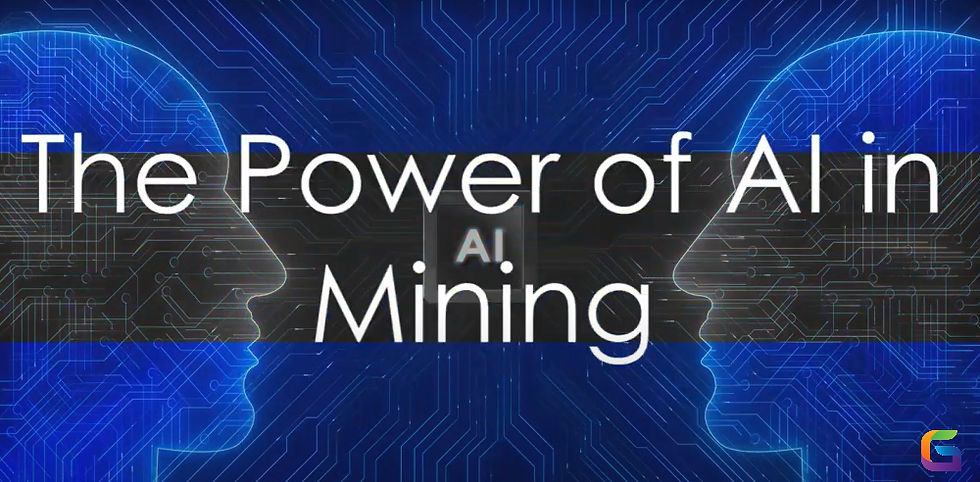Geospatial AI for Automated Deforestation Detection and Monitoring
- GeoWGS84

- Jul 10
- 3 min read
The detection, mapping, and management of deforestation have been completely transformed by the incorporation of Geospatial Artificial Intelligence (GeoAI) with environmental monitoring systems. Large-scale, real-time monitoring is essential, as the world's forest cover continues to diminish due to infrastructural development, illicit logging, and agricultural expansion. Using satellite imaging, remote sensing technologies, machine learning (ML), and spatial data analytics, GeoAI enables the automatic, accurate, and scalable detection of deforestation.

Understanding the GeoAI Framework
GeoAI analyses large geospatial datasets by fusing sophisticated AI algorithms with geographic information system (GIS) capabilities. To detect deforestation, this entails:
Using various spectral bands (such as the near-infrared and red edge) to record changes in land cover and forest health is known as multispectral and hyperspectral imagery.
Using variations in radar backscatter strength, Synthetic Aperture Radar (SAR) may detect changes even in cloud-covered areas and at night.
LiDAR data: offering three-dimensional information on forest structure to identify biomass decline and canopy degradation.
AI models that have been trained to identify patterns of deforestation over time and space are fed these data inputs.
AI Techniques for Deforestation Detection
Supervised Machine Learning (ML)
For classifying land cover, Random Forest (RF), Support Vector Machines (SVM), and Gradient Boosting Machines (GBM) are frequently employed.
To forecast new deforestation zones, these models are trained using labelled datasets of both forested and non-forested areas.
Deep Learning (DL)
Pixel-level classification of satellite imagery for high-resolution forest loss detection is made possible by Convolutional Neural Networks (CNNs) and U-Net architectures.
Temporal trends in forest change are captured by time-series DL models like as LSTMs (Long Short-Term Memory networks).
Unsupervised and Semi-supervised Learning
In situations when ground truth data is scarce, anomaly detection and classification are aided by K-means clustering, autoencoders, and self-organizing maps (SOMs).
Change Detection Algorithms
AI improves methods like Image Differencing, Change Vector Analysis (CVA), and Normalized Difference Vegetation Index (NDVI) differencing to automate the identification of forest loss.
Automated Monitoring Pipeline
A standard procedure for geoAI-based deforestation monitoring consists of:
Integration of data from many satellite sources, such as Sentinel-2, Landsat-8, and PlanetScope, is known as data ingestion.
Preprocessing includes radiometric normalization, geometric correction, and cloud masking.
Feature extraction includes backscatter coefficients, elevation, texture, and vegetation indices.
Using AI models for classification or segmentation of deforested areas is known as model training and inference.
Alert Generation: Providing policymakers and conservation organizations with real-time alerts through dashboards or APIs.
Validation: Evaluating the accuracy of the model using high-resolution commercial satellite data, UAV photography, or field data.
Use Cases and Applications
Detection of Illegal Logging: Authorities and forest rangers can intervene thanks to near-real-time alerts.
Measurement, Reporting, and Verification (MRV) frameworks for carbon offset initiatives are supported by REDD+ and Carbon Monitoring.
GeoAI assists in monitoring encroachments in protected habitats as part of biodiversity hotspot surveillance.
Deforestation brought on by land conversion and peri-urban sprawl is identified by urban expansion analysis.
Challenges and Future Directions
Even though GeoAI has revolutionary potential, several issues still exist:
Data Scarcity in Tropical Regions: Few labelled datasets and frequent cloud cover.
Model Generalization: Because of ecological variance, AI models developed in one area might not function effectively in another.
Computational Costs: DL models and high-resolution pictures require a lot of computational resources.
Future advancements will focus on:
Techniques for domain adaptation and transfer learning for worldwide scalability.
Federated learning models are used to protect the privacy of data across organizations.
Using edge AI and IoT devices to monitor deforestation on-site.
At the forefront of technologies for environmental protection is geospatial artificial intelligence. GeoAI helps mitigate climate change and achieve global sustainability goals by automating the identification of deforestation and facilitating prompt responses. Intelligent, scalable, and real-time solutions are key to the future of forest monitoring as satellite data accessibility and AI capabilities advance.
For more information or any questions regarding geospatial AI, please don't hesitate to contact us at
Email: info@geowgs84.com
USA (HQ): (720) 702–4849
(A GeoWGS84 Corp Company)




Comments